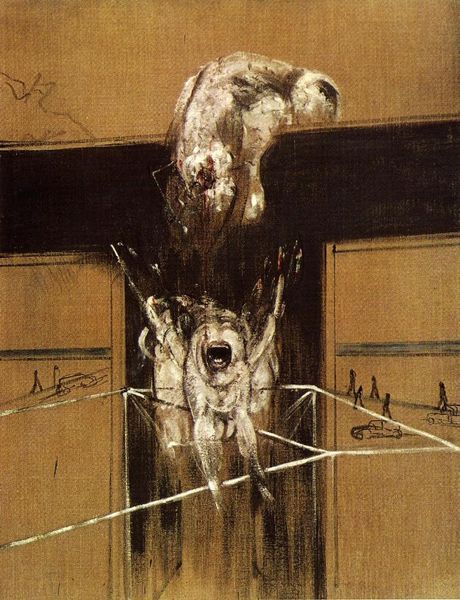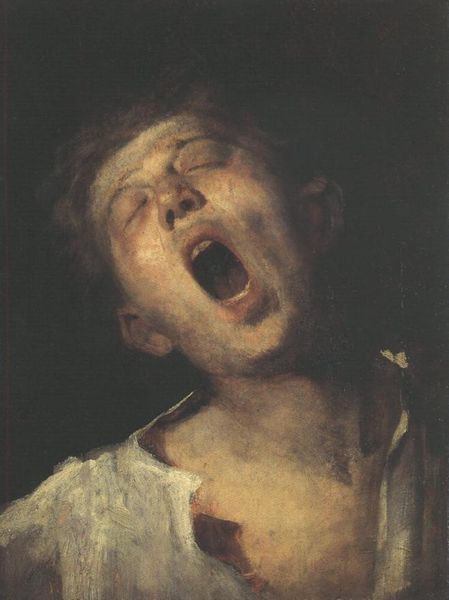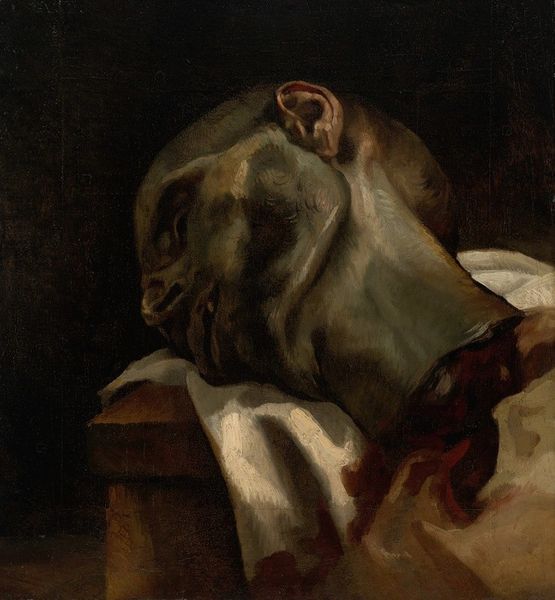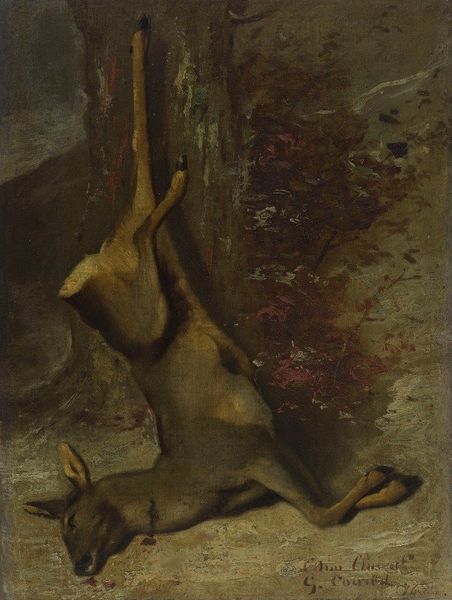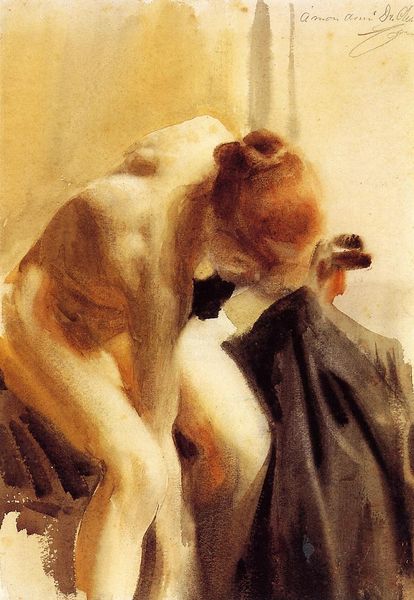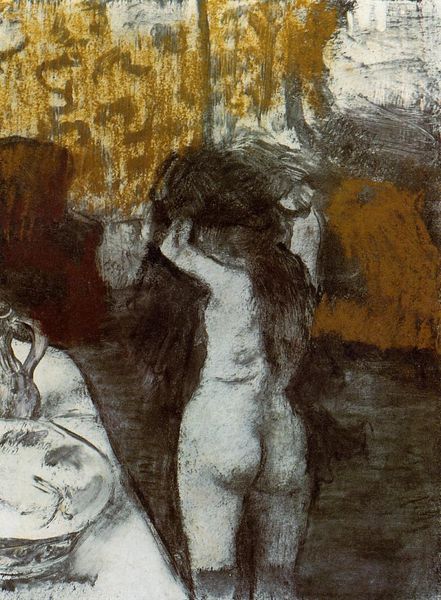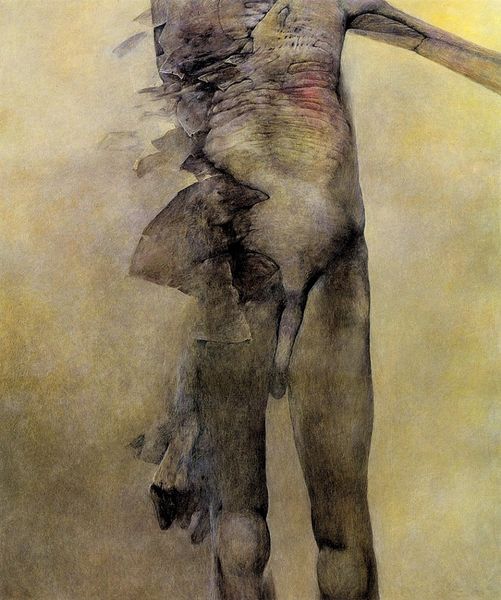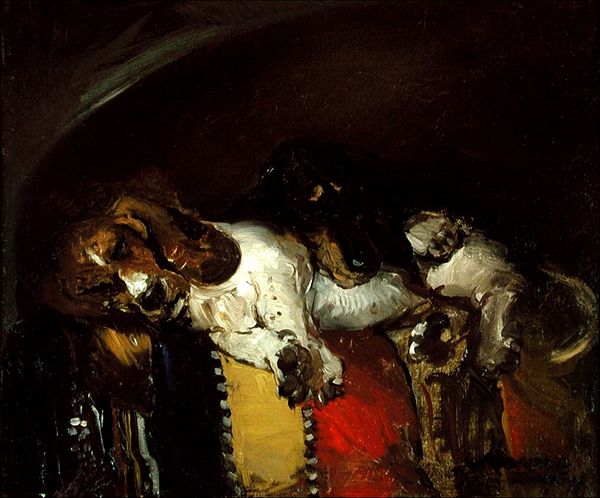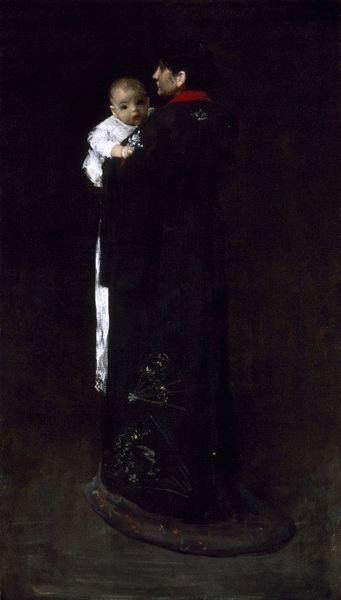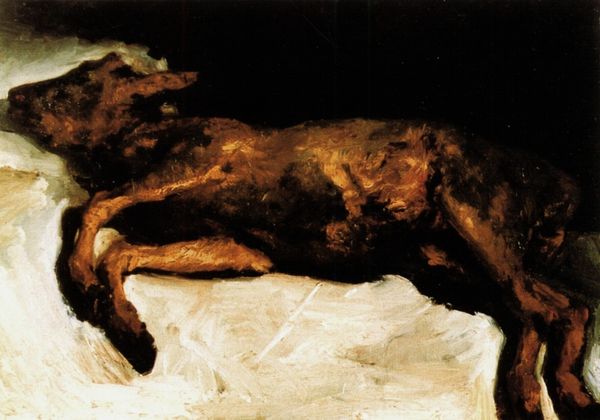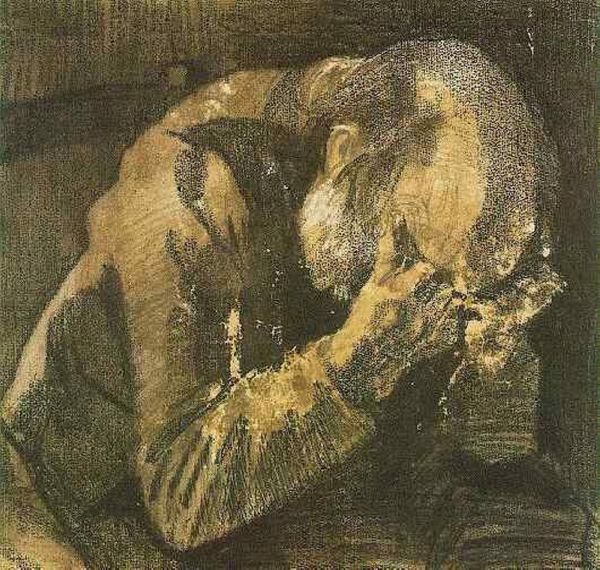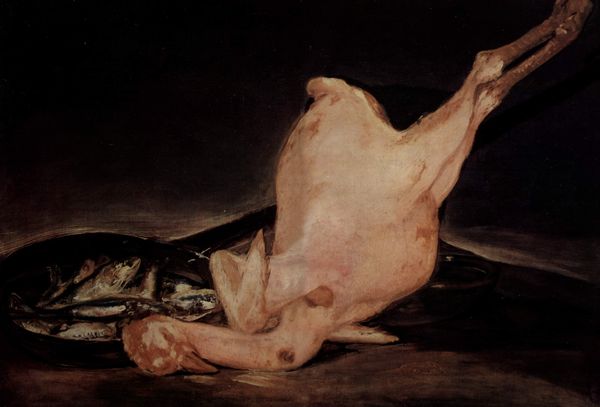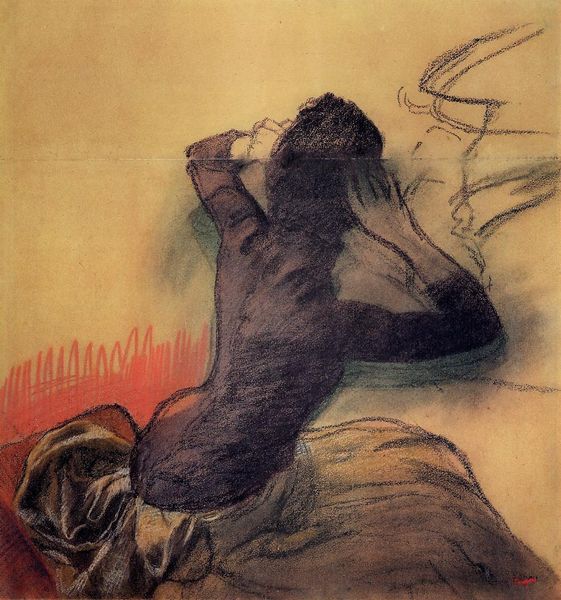
Dimensions: 103 x 75 cm
Copyright: Francis Bacon,Fair Use
Curator: Stepping closer, we're confronted with Francis Bacon's unsettling "Head I," painted in 1948 using oil paint. What's your immediate take? Editor: Distorted agony. I see the primal scream made visible. It's rawness. Curator: Yes, Bacon distorts the human figure to convey a kind of brutal honesty. The geometric cage-like structure is fascinating. It's trapping, almost clinical. The muted grays and blacks enhance the claustrophobia, wouldn't you agree? It recalls iconography found in mourning art, trapping the dead as it attempts to contain the memory. Editor: Absolutely. And the lines cutting across the face… It feels almost as if the face itself is a diagram, a deconstruction of the self. Consider what was happening when it was created. Do you think the history connects? Curator: Almost certainly. Remember, the world was barely emerging from World War II when Bacon made this, an environment where atrocities redefined humanity. This painting, one could argue, serves as a mirror reflecting that collective trauma. There's no soft landing in it; we are suspended mid-scream. The grid-like space is not really protecting or shielding as it feels like it is there to hold him prisoner, wouldn't you say? Editor: Definitely, although perhaps "prisoner" is too simple. It's almost as if he’s trying to dissect the anatomy of horror, pinning down the unnamable feeling. And you're right, those neutral tones aren't simply aesthetic. They strip away any romanticism, anything that could soften the impact. This feels visceral, not observed. Curator: Precisely! Bacon wasn’t interested in conventional representation, or painting some sweet-faced person as history painters had attempted. Instead, it seems like he wanted to peel back layers, exposing the vulnerability beneath the facade. The scream seems born of existential dread and, maybe, the futility of escaping it. Editor: After spending a few minutes with "Head I", I see a statement. More than agony alone, I now detect a profound act of witnessing. It's disturbing but it is more poignant now. Curator: Indeed. Bacon has given us the privilege to witness. And, importantly, perhaps a shared human experience of the modern age.
Comments
No comments
Be the first to comment and join the conversation on the ultimate creative platform.
